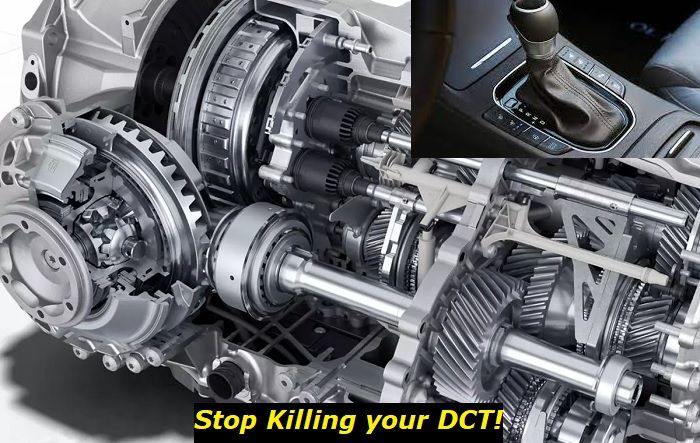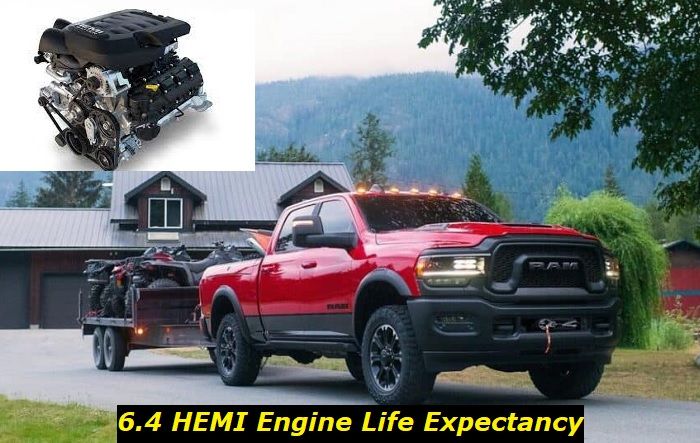The goal when designing the Ford-based 6.0L Power Stroke diesel engine, also known as the VT365, was to improve the fuel economy and performance of the 7.3L Power Stroke. This added another chapter to Ford engines history.
Key features and my opinion about the engine
- Production years:2003-2009
- Average lifespan of 6.0L Power Stroke:320,000-350,000 miles
- Fuel supply type:direct injection
- Power range:325 hp
- Fuel efficiency:bad
- Engine block material:cast-iron
- Engine reliability score:low
- The most common problems:EGR cooler and oil cooler problems, fuel pump issues, head gasket problems, oil pump failing.
.jpg)
Low fuel pressure symptoms
Although there are plenty of other signs, a drop in engine performance is the easiest to spot sign of low fuel pressure. This may appear as engine sputtering, hard starting, throttle lag, or consistent stalling.
- Symptom 1: Slow start, stalls and sputtering
Despite warming up and cranking the engine, are you experiencing sluggishness in your Power Stroke? Does it delay in obeying starting commands? If your answer to any of these questions is "yes," then it is likely that the cause is low fuel pressure.
Your 6.0L Power Stroke engine needs a minimum psi of 45 to start. The engine will fail to ignite or struggle to start when it falls below this minimum. This is the primary cause of slow starts, sputters, and stalls. These issues may also occur while your engine is running or idling.
- Symptom 2: Throttle lag or unresponsiveness
Low fuel pressure in your 6.0L Power Stroke engine can lead to throttle lag or unresponsiveness. It is, therefore, a common symptom for your accelerator to feel a bit weak when the pedal is pressed on. A constant flow of gasoline is required to ensure that the vehicle runs efficiently. Fluctuations or significant drops in psi will cause the throttle to be unresponsive.
It is also important to note that there are other triggers of an unresponsive throttle. These include weak fuel filters and bad fuel pumps. Therefore, testing the fuel pressure is crucial to solving throttle lagging concerns.
- Symptom 3: Vehicle Misfire
A major consequence of having insufficient fuel pressure in the fuel system of your 6.0L Power Stroke is the air-fuel ratio. Maintaining the right air and fuel mix is essential to maximizing economy and performance. If the AFR is too rich or too lean, it can weaken your engine's combustion. As a result, your vehicle may buck or misfire when idle or during acceleration.
You may also notice that your vehicle's 6.0 Power Stroke engine's fuel system feels fuel-starved or heavy. Navigating at highway speeds, trudging when under load, and carrying out heavy accelerating may become difficult. These signs of a drop in engine performance are a reason to check your fuel pressure.
- Symptom 4: Bad Vibration
Your 6.0L Power Stroke engine will likely vibrate if the fuel pressure or power is insufficient. Listen for any vibrating sounds emanating from the engine after starting your vehicle. This mild grinding sound is similar to your engine's sound when it does not fire from all cylinders or drive over rumble strips.
- Symptom 5: Check Engine Light Comes On
The check engine light signal is the best way to know if your engine fuel pressure is low.
It is triggered once a fuel-pressure-related problem affects your engine. Where the car is stalling, and the light is on, a likely cause of the low pressure is a damaged fuel pump.
Causes of low fuel pressure in 6.0L Power Stroke engine
Once you are certain that the fuel pressure to your 6.0L Power Stroke engine is low, it is time to discover the causes. Here are the factors most likely to reduce fuel pressure in your engine.
- Clogged Fuel Filter
Fuel filters are responsible for cleaning the fuel that enters the engine. As such, it needs regular replacements. When you fail to change your fuel filter for a prolonged period, it is likely to clog. A clogged fuel filter will restrict fuel flow to the injectors.
As a result, you will notice that your engine is losing power. In such a circumstance, changing the fuel filter is appropriate. Bad fuel filters can cause low fuel pressure and damage fuel pumps in the process. They are also responsible for no-starts, hard starts, hesitations, and engine misses.
The appropriate action to take if your filter is clogged is to replace it.
- Bad Fuel Pump
Another likely cause of low fuel pressure on your 6.0 Power Stroke engine is a bad fuel pump. Having a bad fuel pump can damage your filter, eventually affecting your engine. Clear signals to inspect your fuel pump include extreme and unusual noises from the vehicle engine.
These sounds include squealing, squeaking, or whining sounds. You may have a bad fuel pump if your engine sputters or struggles to start. This is because weak or faulty fuel pumps cannot generate the requisite pressure to push gas through. Damaged fuel pumps will also make acceleration difficult or cause your 6.0 Power Stroke to stall or cease abruptly.
- Bad fuel pump remedies
As such, if you are sure that your fuel pump is malfunctioning, here are some appropriate actions:
- Check the pump's fuse and relay: SwitchONthe ignition. Listen for a humming sound from the rear of your automobile. If no sound emanates from there, your pump's relay and the fuse may malfunction. In that case, replace the fuse and relay.
- Diagnose the power cables: Your fuel pump may not be damaged; it may just not be receiving the appropriate power to function adequately. To achieve this, use your vehicle user manual to locate your socket. SwitchONthe ignition, disconnect the socket, and test the voltage with the aid of a multimeter black lead wire. Ground the wire on your vehicle's exhaust pipe. Use the red wire to check each socket to ensure each gets the right voltage. Replace malfunctioning sockets.
- Resetting the inertia switch: Your vehicle's inertia switch may be the reason why it is not receiving the power it needs. Find the switch (normally located in the trunk) and hit it with a screwdriver, resetting it by pressing it down.
- Assessing fuel pressure: Your 6.0L Power Stroke should receive a minimum of 30psi from your fuel pump when the ignition is switchedON. Use a pressure tester kit, turn the ignition on and take the measurement. Any pressure below 30psi is the reason to replace your fuel pump.
- Bad Fuel Pressure Regulator
The responsibility of controlling fuel pressure in your vehicle's fuel rail falls on the fuel pressure regulator. Although the chances of this part failing are slim, it is worth a check. When it does, it can trigger an increase or decrease in fuel pressure.
Besides causing your engine to stall, lag, or fail to start. It can also decrease your car's mileage. The best remedy in this scenario is to replace the damaged regulator. Even though the cost of these replacements varies, expect to pay between $265 and $290 without factoring in labor costs.
- Stuck Fuel Injector
Another possible cause of low fuel pressure in your 6.0L Power Stroke powered vehicle is a damaged or stuck fuel injector. Misfire codes on the affected cylinder will appear simultaneously on your ECU.
- Constricted Fuel Pipe Line
Even though fuel pipelines are made of steel and aluminum, they are susceptible to damage from bumpy or rugged terrains. Such terrains may squeeze these pipes, restricting fuel flow to your engine.
Testing For Low Fuel Pressure In Your 6.0L Power Stroke
Although the symptoms mentioned above are indicators of possible low fuel pressure, it is important to test to verify. This is because other factors may trigger these symptoms, such as a bad FICM. The tools you need for this test are a compatible Schrader valve test port adapter, a 6mm Allen wrench, and a fuel pressure gauge.
If you want to test for low fuel pressure in your 6.0L Power Stroke, follow the steps below:
- Detach the entire air filter assembly and cold side intercooler pipe
First, locate the fuel pressure test port plug on your 6.0L Power Stroke engine. You will find it at the base of the housing area of your fuel filter. To access the fuel pressure test port, you must unmount the engine air filter kit and the cold side intercooler.
- Mount a Schrader valve fitting to test for fuel pressure
Once you have removed the two impediments to accessing the test port plug, it is time to install the Schrader valve test fitting. Start by removing the port plug with a 6mm Allen drive/wrench. Then mount the test fitting on the fuel filter housing. If the valve test fitting's base is an O-ring, use clean motor oil to coat it before proceeding to install.
- Fix valve adapter
The next procedure involves mounting a valve adapter that is compatible with your fuel pressure gauge. Two ways to ensure that you have the appropriate one is to contact your local dealer or check the user's manual for your 6.0L Power Stroke. One benefit of mounting this adapter is that it can be left in your vehicle permanently to perform diagnostics in the future.
- Connect the gauge to fittings
After installing the adapter and test fitting, install the fuel pressure gauge to the Schrader valve test fitting and adapter. Verify that these lines/fittings are securely fastened. Afterward, you can re-mount the intercooler pipe and air filter earlier removed.
- Check test result
Look for the KOEO and KOER readings on your fuel pressure gauge. If it maintains a psi above 45 when idle, the odds are that you are facing a lift pump problem. In that case, the pump may need replacement.
However, before replacing the pump, test the fuel pump system by following the procedure mentioned above for diagnosing bad fuel pumps. Also, check the connections in the fuel system for any faults.
Next, check the pressure at Wide Open Throttle (WOT). It should be a minimum of 45psi. If the pressure readings on your fuel pressure gauge do not fit within these specifications, then you may have low fuel pressure in your 6.0L Power Stroke.
In that case, you may opt for Ford's blue spring regulator for fuel pressure. This product can boost the fuel your 6.0L Power Stroke receives by as much as ten percent.
Conclusion
Fuel system issues are some of the most common problems in 6.0L Power Strokes, so it is important to be diligent in your diagnostics. If you are experiencing any of the six low-fuel-pressure symptoms listed above, it is important to have your vehicle diagnosed by a professional as soon as possible.
While some causes may be relatively easy to fix, others could require more extensive repairs. The good news is that most of these problems can be avoided with proper maintenance and care for your 6.0L Power Stroke engine. Keep an eye on your fuel filter and replace it when necessary, make sure your fuel pump is in good condition, and check your fuel pressure regulator for leaks or damage.
You can help ensure that your engine runs smoothly and without interruption by catching small issues before they become big ones.
About the authors
The CarAraC research team is composed of seasoned auto mechanics and automotive industry professionals, including individuals with advanced degrees and certifications in their field. Our team members boast prestigious credentials, reflecting their extensive knowledge and skills. These qualifications include: IMI: Institute of the Motor Industry, ASE-Certified Master Automobile Technicians; Coventry University, Graduate of MA in Automotive Journalism; Politecnico di Torino, Italy, MS Automotive Engineering; Ss. Cyril and Methodius University in Skopje, Mechanical University in Skopje; TOC Automotive College; DHA Suffa University, Department of Mechanical Engineering






Add comment